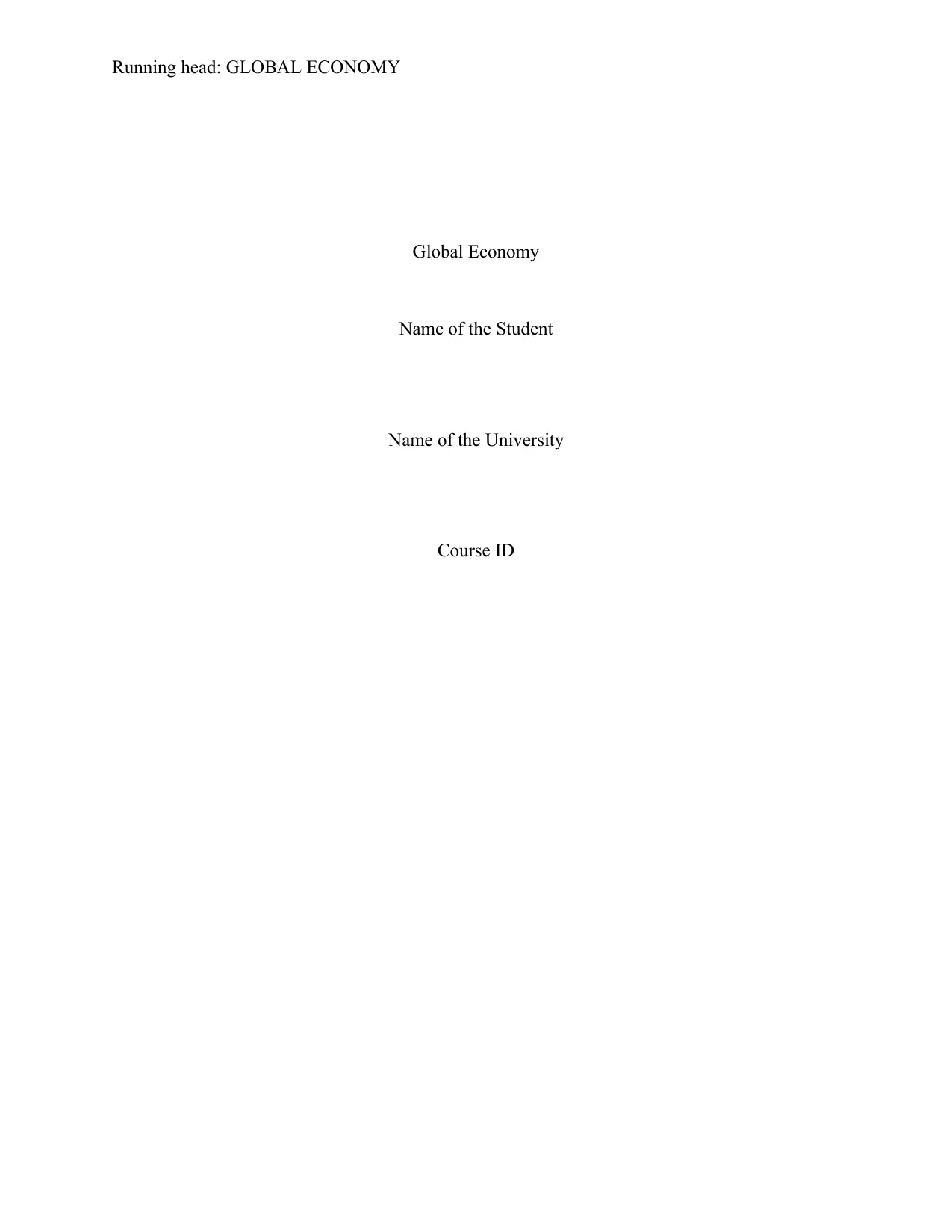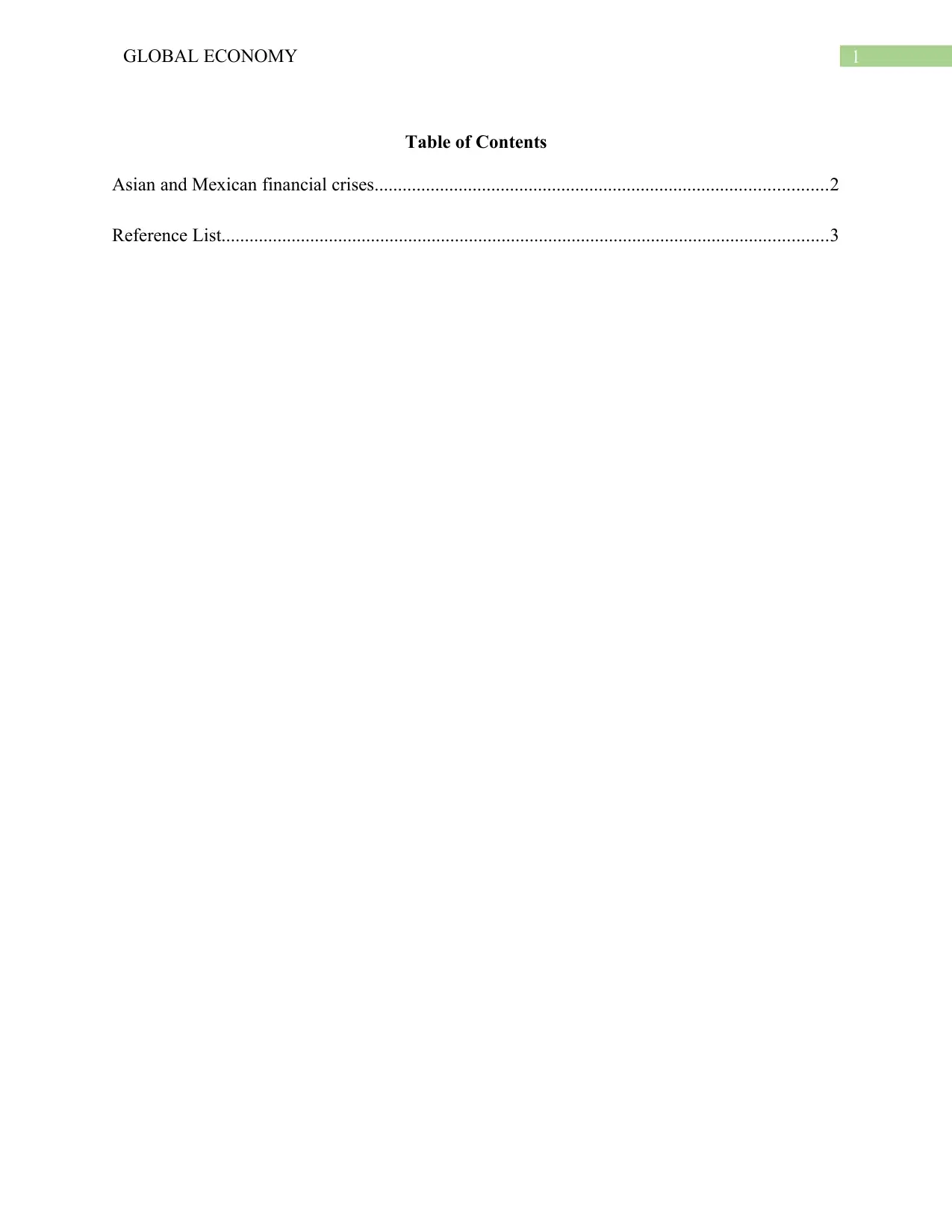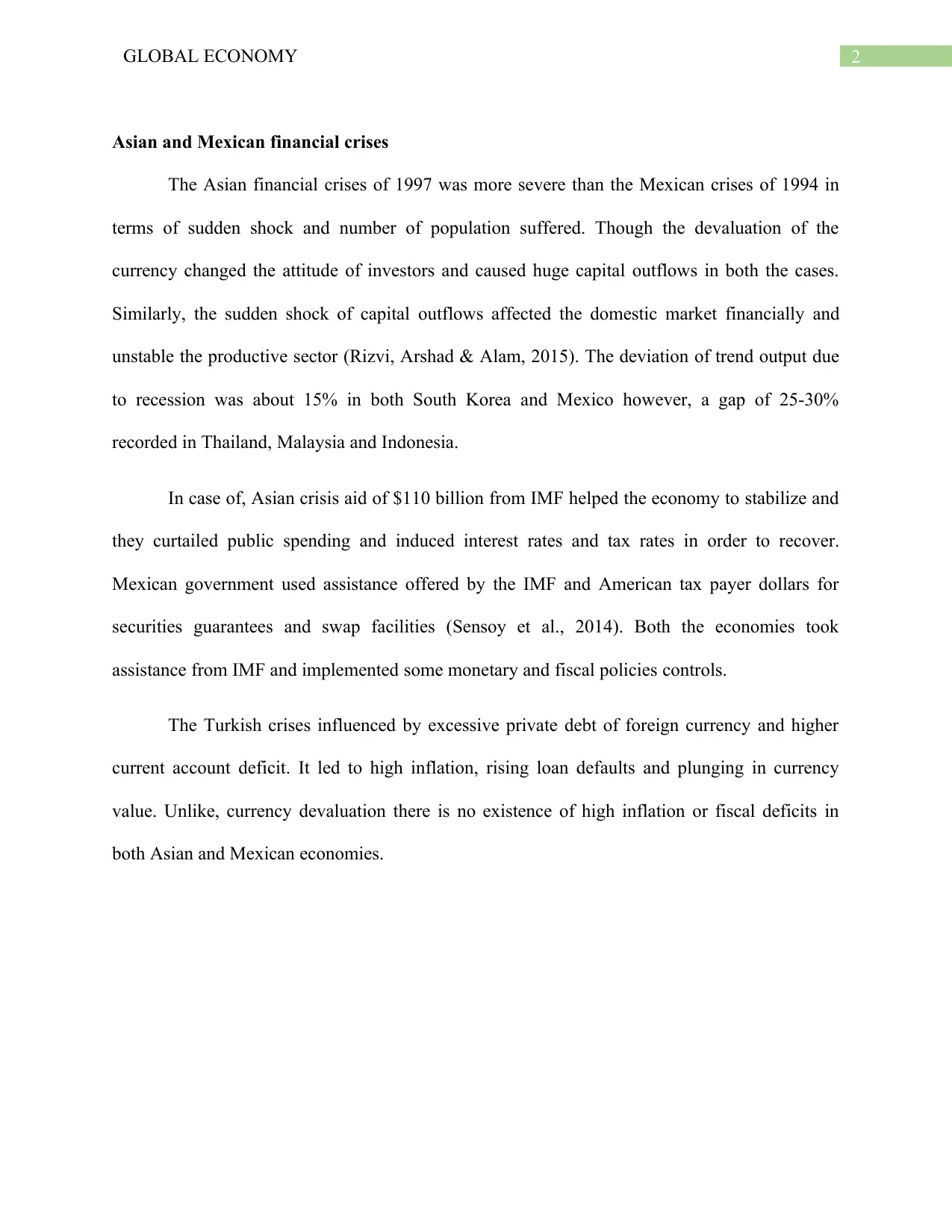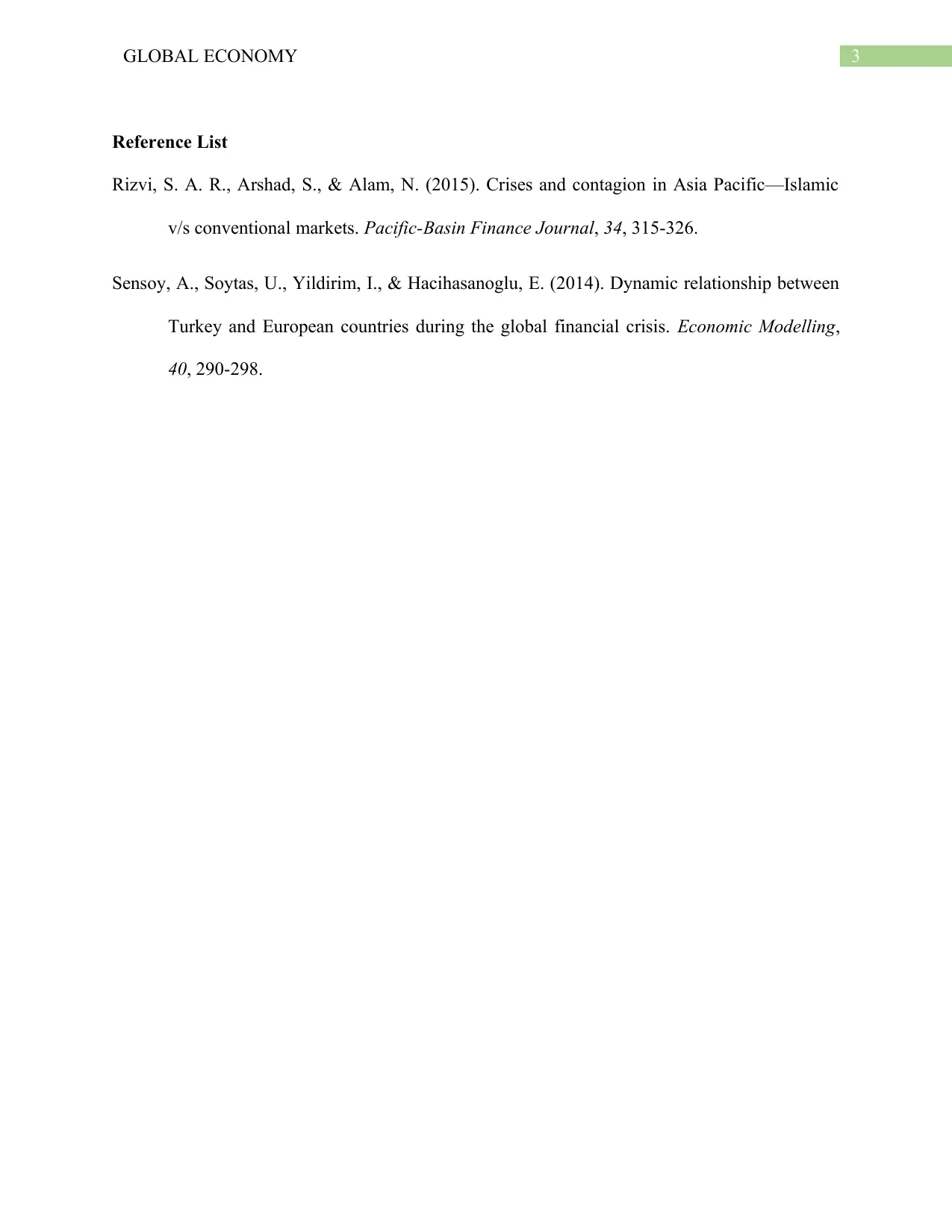Comparative Analysis of Asian and Mexican Financial Crises: Report
VerifiedAdded on 2022/10/09
|4
|357
|15
Report
AI Summary
This report provides a comparative analysis of the Asian and Mexican financial crises, highlighting key similarities and differences. It examines the impact of currency devaluation, capital outflows, and the role of international institutions like the IMF. The report details the economic consequences, including recession and the implementation of monetary and fiscal policies. It also touches upon the Turkish financial crisis for comparison, emphasizing the role of private debt and current account deficits. The report analyzes the specific actions taken by the governments of the affected countries, like South Korea, Mexico, Thailand, Malaysia, and Indonesia, and evaluates their effectiveness in stabilizing their economies. This assignment is a valuable resource for students studying economics and finance, offering a clear understanding of financial crises and their implications.
1 out of 4







![[object Object]](/_next/static/media/star-bottom.7253800d.svg)